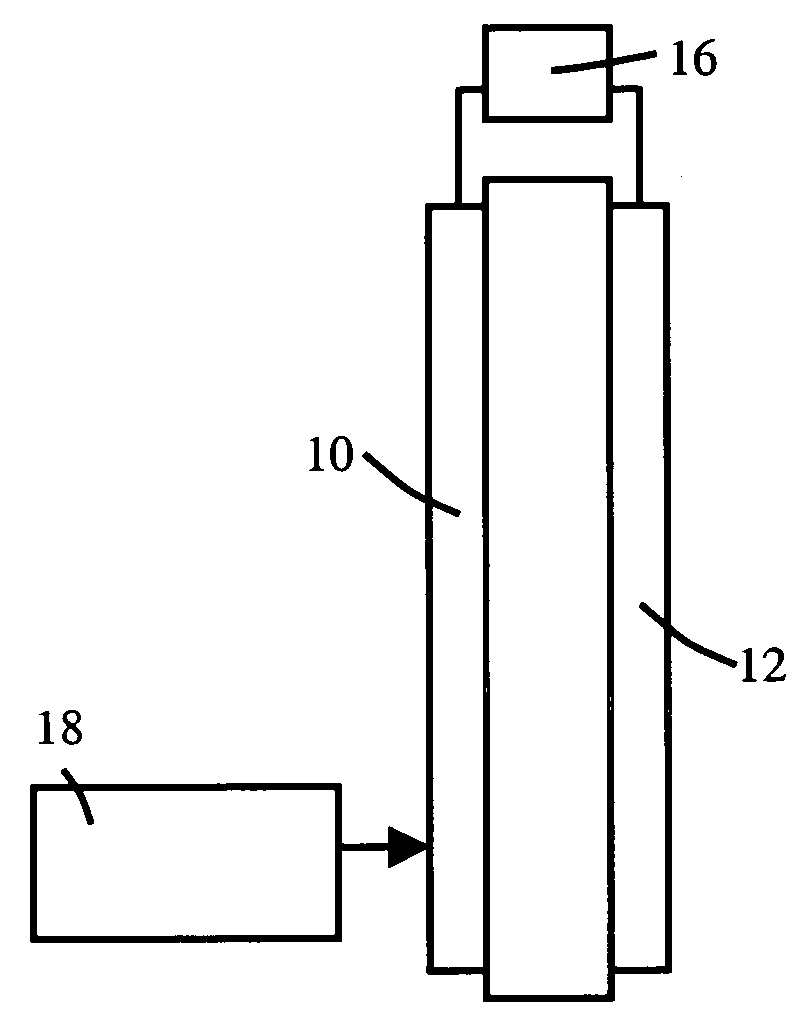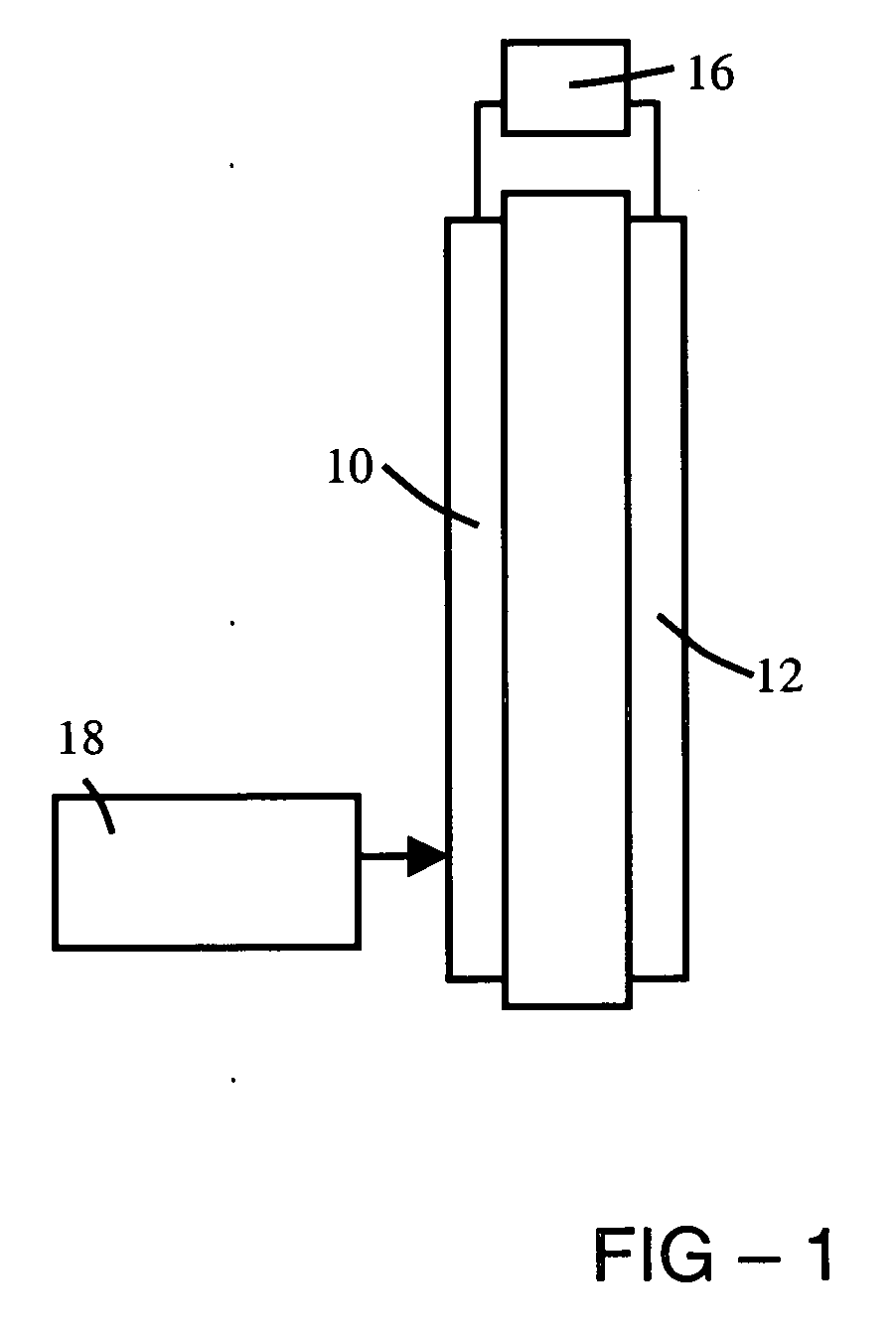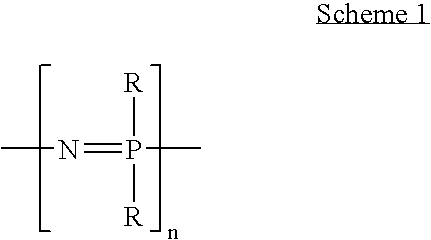Anhydrous proton conductor based on heterocycle attached to a polymer backbone
a heterocycle and proton conductor technology, applied in the field of ionconducting materials, can solve the problems of poor chemical stability, low mechanical stability, and large quantity, and achieve the effects of increasing the conductivity of proton, reducing the leaching of the proton source, and increasing the stability of the membran
- Summary
- Abstract
- Description
- Claims
- Application Information
AI Technical Summary
Benefits of technology
Problems solved by technology
Method used
Image
Examples
Embodiment Construction
[0015] Embodiments of the present invention include anhydrous proton conducting polymers in which a tetrazole group is attached to a polymer backbone. Example polymer backbones include polyphosphazene and silicon containing organic-inorganic hybrid polymers. The polymers are blended with a proton source, such as an acid. The acid may be a heteropolyacid or phosphoric acid, for example, allowing high-temperature fuel cell operation under anhydrous conditions. Here, the term “high-temperature” refers to temperatures above 100° C.
[0016] The polyphosphazene backbone is a preferred choice for the polymer backbone of a proton-conducting membrane, as this flexible inorganic backbone is chemically stable, stable against oxidation, resists homolytic cleavage, and is inherently flexible. However, other polymer backbones may also be used.
[0017] In international patent application WO 00 / 72395, Pintauro reported a sulfonated polyphosphazene used as a PEM. However, the membrane showed poor prot...
PUM
| Property | Measurement | Unit |
|---|---|---|
| Electrical conductor | aaaaa | aaaaa |
| Bond | aaaaa | aaaaa |
Abstract
Description
Claims
Application Information
 Login to View More
Login to View More - R&D
- Intellectual Property
- Life Sciences
- Materials
- Tech Scout
- Unparalleled Data Quality
- Higher Quality Content
- 60% Fewer Hallucinations
Browse by: Latest US Patents, China's latest patents, Technical Efficacy Thesaurus, Application Domain, Technology Topic, Popular Technical Reports.
© 2025 PatSnap. All rights reserved.Legal|Privacy policy|Modern Slavery Act Transparency Statement|Sitemap|About US| Contact US: help@patsnap.com



